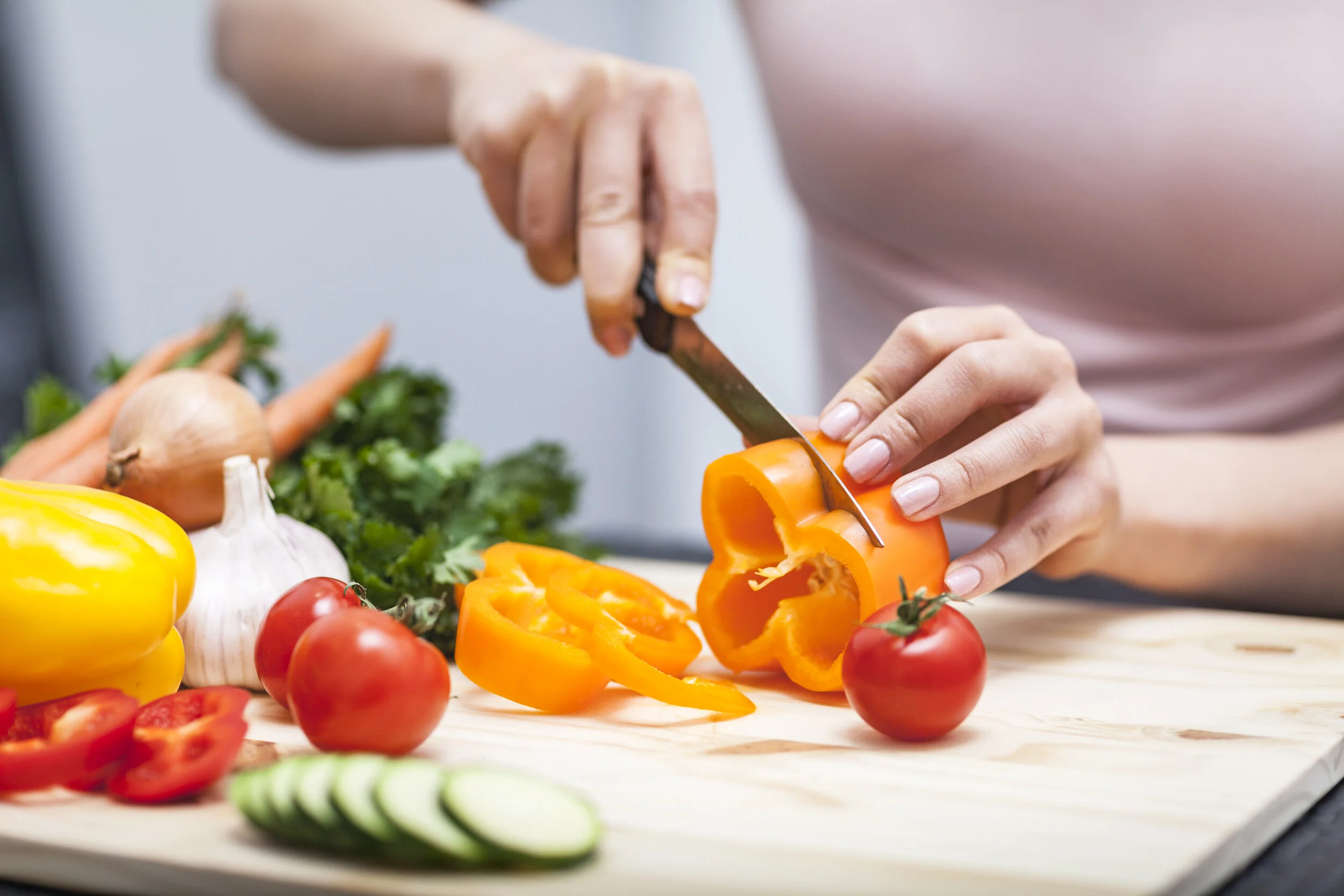Let’s talk about brittle nails
Brittle, thin, splitting, or otherwise weak nails are a common issue. In fact, according to the Canadian Dermatology Association, brittle nail syndrome — or onychoschizia, as it’s known medically — affects about 20% of us, with women affected twice as frequently as men. (1, 2)
So what makes brittle nails so common?
Nail brittleness may be caused by a variety of underlying medical conditions, including Raynaud's disease and possibly even low thyroid function. Other potential causes of brittle nails include poor diet, skin diseases, or endocrine disorders. (2, 3, 4)
Before trying nutritional or herbal treatments for brittle nails, it’s important to speak with your doctor or medical professional to rule out any pre-existing medical cause for the issue at hand (er, fingertip!).
Sometimes, Brittle Happens
Our hands are the first point of contact for many forms of activities that, over time, can damage the keratin that our nails are comprised of. If your nails are suffering from some habitual wear ‘n’ tear, hey — it happens. And let’s face it: Aging doesn’t help.
In many ways, we can’t blame our nails for taking a beating — protecting our digits is our nails’ prime evolutionary function!
Wet Work Worries
While nails grow to shield our fingertips and soft tissue from harm, some daily habits, like washing dishes, are more potentially harmful to overall nail health than others.
Why washing dishes? Well, according to the Mayo Clinic, prolonged exposure to water — especially at very hot and very cold temperatures — can give your nails a hard time, making them more susceptible to splitting. This includes baths! (5)
Oh, water. How can something so wet make our nails so dry?
To that end, dermatologist Dr. Barry Goldman describes activities like washing dishes to be “wet work.” (6)
So if you find yourself faced with household chores — or professional duties — that require your hands to be frequently submerged in water, you may want to consider wearing rubber gloves. Help your nails help you!
Chemical Concerns
Our nails regularly encounter chemicals — hand sanitizers, creams, you name it — but some of these chemicals are more avoidable than others. For example, while healthy fingernails can look fab with a coat of fire engine red polish, removing it with polish remover can really do a number on your nails.
“Use nail polish remover sparingly,” recommends Dr. Dana Stern on her personal website. “Polish removers are solvents and tend to be very drying and dehydrating to the nail.” (7)
The jury’s out on how best to remove nail polish. A homemade solution is to scrub your nails with toothpaste, or soak them in vinegar and lemon juice for 20 minutes. Removers with acetone could be harsher than those without, says Dr. Stern, and in any case, you could also consider simply keeping the polish on.
“The polish serves as a kind of glue to hold the delicate, fragile onychocytes (nail cells) together,” Stern says.
You might be sick of the colour, but that polish is doing work!
Supplement Science
If your nails are still thin and brittle after taking the above tips into consideration for a period of time, it might be worth looking into supplementing your diet with biotin or gelatin.
Biotin, also known as vitamin B7 or vitamin H, helps maintain the body’s ability to metabolize nutrients. It also helps maintain healthy hair, skin, and nails. (8)
Additionally, in a 1990 study published in the Journal of the American Academy of Dermatology, a group of patients with brittle nails began taking biotin. Those who did saw their nail thickness increase by a significant amount — 25%, in fact. The same group of patients also saw a reduction in splitting nails. (9)
Some biotin supplements are enhanced with vitamin C, which aids in collagen formation. Gelatin, on the other hand, is comprised of collagen.
In 1950, a landmark study was published in the Journal of Investigative Dermatology entitled “The Effect of Gelatin on Fragile Finger Nails.” The study, authored by Dr. Terence Lloyd Tyson, observed the results of patients — who had issues of “soft, peeling, easily breaking finger nails” — as they participated in a therapy trial of a daily gelatin solution.
The results? “In ten of these patients, the white spots on the finger nails disappeared and the nails resumed completely normal appearance in thirteen week.” (10)
Nailing It
Bitter about brittle nails? Don’t be! It happens to the best of us. Just keep in mind: Our nails serve an important purpose, but we can be kinder to them. And, if needed, we can give them a boost of biotin or gelatin for an extra helping of TLC.
Sources
Brittle nail syndrome: A pathogenesis-based approach with a proposed grading system. Peter C.M. Van de Kerkhof, MD, PhD, Marcel C. Pasch, MD, PhD, Richard K. Scher, MD, Martina Kerscher, MD, Uwe Gieler, MD, Eckard Haneke, MD, PhD, and Philip Fleckman.
Onychoschizia means brittle, splitting, soft or thin nails; https://dermatology.ca/public-patients/nails/brittle-nails/
Gawkrodger DJ. Dermatology: An Illustrated Colour Text. Edinburgh, NY: Churchill Livingstone; 1992:64.
Fitzpatrick B, et al, eds. Dermatology in General Medicine. Vol I. 4th ed. New York, NY: McGraw-Hill; 1993:702.
“Fingernails: Do's and don'ts for healthy nails - Are you taking good care of your nails? Here's what you need to know to keep your fingernails in tiptop shape.” Mayo Clinic Staff, October 16, 2019
Why Do My Nails Break So Easily? New York Magazine, The Cut, M. Heisey May 16, 2017
Dr. Dana Stern, Peeling Nails aka. Onychoschizia, April 13, 2018
Colombo VE, Gerber F, Bronhofer M, Floersheim GL. Treatment of brittle fingernails and onychoschizia with biotin: scanning electron microscopy. J Am Acad Dermatol 1990; 23:1127 -1132.
Treatment of brittle fingernails and onychoschizia with biotin: Scanning electron microscopy December 1990 Volume 23, Issue 6, Part 1, Pages 1127 – 1132.
“The Effect of Gelatin on Fragile Finger Nails.” Dr. Terence Lloyd Tyson, The Journal of Investigative Dermatology, November 19, 1949.





